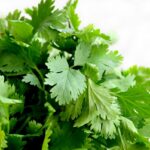
Did You Know…
Corn (Zea mays, AKA maize) is a grass that was developed from the teosinte plant starting about 9000 years ago in Southwestern Mexico. Cultivation spread widely throughout the Americas and later the Spanish brought corn to Europe and beyond. More corn by weight is produced worldwide than any other grain. Nutritionally, corn is a good source of fiber, folate, thiamin, vitamin C and carotenoids. Corn is one of the few crops that we consume both as a vegetable and as a grain.
Types of Corn
There are 5 major types of “field corn” that are grown to full maturity – Dent, Flint (AKA Indian Corn), Pod, Flour and Popcorn. Most are yellow or white except for the multicolored flint corn. This corn is primarily used for animal feed, fuel ethanol and sweeteners. Smaller amounts are turned into flour, distilled spirits, cereal and non-consumable textiles and chemicals.
Sweet corn is the type we most often eat as a vegetable like corn on the cob or creamed corn. These varieties have a higher sugar content and are harvested while immature and tender. Sweet corn types are also classified as to the genetics that give them their sweetness – standard, super sweet, sugar-enhanced or some combination of the three. Sweet corn can be yellow, white, or bicolor.
When to Plant
Corn is a warm season crop direct seeded after all danger of frost in the Spring. Field corn is left to stand until fully mature and the plants begin to wilt. Sweet corn, especially the super sweet varieties, are usually planted a couple of weeks later than field corn so the soil is a bit warmer. A second crop of corn can often be planted in late summer for a fall harvest. Corn is a heavy feeder and will produce best in a rich, well fertilized soil. As a grass, corn can withstand some dry conditions but will produce best with even watering.
Harvest and Storage
Field corn ears are taken off the plant when completely mature and dry. Ears can be stored on the cob or “shelled” – removing the kernels from the cob. Store field corn in a dark dry location protected from insects and other hungry critters. Sweet corn is best harvested right before consumption as the sugars begin to convert to starch quickly after picking. For storage, whole sweet corn can be frozen, or corn kernels can be frozen, canned or pickled.
Michael Vidrine
Brazos Valley Gardener, Orchardist, Apiarist and Instructor
Street Corn Salad
Ingredients
- 1 bunch Romaine cut into shreds
- 2 ears corn shucked and silk removed
- 1/2 cup cotija cheese crumbled
- 1/4 cup red onion chopped
- 1-2 avocados sliced or diced
- crushed tortilla chips for garnish
- 1 recipe Cilantro Lime Dressing
Instructions
- Option 1 for corn prep: Preheat your grill to medium-high heat. Then place the corn cobs directly on the grill and cook for 10-12 minutes (or until grill marks form) turning occasionally. Transfer the corn to a tray to cool then cut off the kernels.
- Option 2 for corn prep: Bring a large pot of water to a boil on the stove. Once boiling, add your corn cobs. Then cover the pot and boil for 1-2 minutes. Transfer the corn to a tray to cool then cut off the kernels.
- Add your cooked corn kernels, cotija cheese, red onion, and avocado to your Romaine in a medium bowl and toss with your desired amount of dressing.
- Sprinkle crushed tortilla chips over the top and serve immediately.
Notes
Cilantro Lime Dressing
Ingredients
- 1 cup mayonnaise
- 1/4 cup buttermilk
- 1/2 cup dry Riesling
- 1 packet ranch seasoning mix
- 2 tomatillos husks removed and cut in half
- 1 bunch fresh cilantro roughly chopped
- 1 jalapeño seeds removed for mild heat, roughly chopped
- 1 tbsp fresh lime juice about ½ of a lime
- 2 cloves garlic
Instructions
- Add ingredients into the blender, in order as listed above. Blend on high for at least 1 minute, or until everything is combined and blended smoothly. Add more jalapeno until desired heat element and salt to taste.
- Pour into a covered container and refrigerate for at least 4 hours before serving.
Notes
Wine Pairings for Dishes with Corn
as recommended by Karen Bonarrigo & Merrill Bonarrigo
- Sweet corn has a natural sweetness in flavor with a big texture from its starch. Corn on the Cob freshly harvested has less starch than if it is stored. Fresh corn will taste lighter and sweeter so think about lighter weight white wines like Messina UnOaked Chardonnay.
- Corn is an easy starch addition to any meal and its texture creates a silkiness in the finish that makes a nice complement to tannic wines. As the starch increases in the corn, it creates a heavier flavor weight and can pair with heavier whites and reds.
- Corn Chowder offers a more complex and creamy starch that can accompany beef, chicken, veal or turkey. The texture is velvety and the flavor rich. Here the spices you choose to use will determine the wine best suited to the dish.
- In the Culinary View’s Vintage House Corn Chowder, we use a little jalapeno (heat) and Cumin (earthy and savory). These are both bold flavors which create a heavier weight wine.
Recommended wines:
-
- Messina Hof Unoaked Chardonnay
- Messina Hof Gewurztraminer
- Messina Hof GSM (Medium bodied red)

Merrill and Karen Bonarrigo, Wine and Food Pairing experts at Messina Hof Wine Cellars, Inc.


